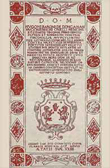|

YOU ARE HERE >> Irish Story > Home > Heroes > Hugh O'Neill
Hugh O'Neill
Hugh O'Neill (1550 - 1616) was Third Baron Dungannon and Second Earl of Tyrone. Born in Dungannon, at nine he was taken by Sir Henry Sidney to his castle in England and brought up there in the 'new religion’.
After his return to Ireland in 1568 he remained loyal at first to his English connections and led a troop of horse in the queen’s pay during the Desmond rebellion of 1569; but in 1588 he helped survivors from the wreck of the Spanish Armada, arousing English suspicions.
In 1595 he was inaugurated as the O’Neill in traditional fashion. He was publicly proclaimed a traitor at Newry in June 1595 but in the autumn sued for peace and pardon, apparently in order to gain time until Spanish aid could arrive.
Despite the traditional enmity between the O'Neills and the O'Donnells, Tyrone allied himself with Hugh Roe O'Donnell, and the two chieftains opened communications with Philip II of Spain, their letters to whom were intercepted by the viceroy, Sir William Russell. They put themselves forward as the champions of the Catholic religion, claiming liberty of conscience as well as political liberty for the native inhabitants of Ireland. In April 1596 Tyrone received promises of help from Spain.
In 1597 hostilities broke out again, culminating in the Battle of the Yellow Ford [August 1598], near Armagh, in which the English suffered a heavy defeat and their commander was killed. O’Neill was being called Prince of Ireland, and in great alarm Queen Elizabeth sent over Robert Devereux, Earl of Essex, in 1599, providing him with an army of 20,000 men and giving him almost as much power as if he had been made King of Ireland. O’Neill asked for a parley, and the two leaders met in the middle of a river near Dundalk in September 1599. They agreed on a truce until 1 May 1600, and Essex returned to England, where Elizabeth’s displeasure resulted in his disgrace and execution.
O’Neill, now at the height of his power, demanded autonomy. He made a royal progress through Ireland, taking submissions and preaching a holy war. Elizabeth then sent over Lord Mountjoy as Deputy, with Sir George Carew as president of Munster. Mountjoy proposed ringing Ulster with forts and using famine ‘as the chief instrument of reducing this kingdom’. Some of the Irish chiefs deserted O’Neill to side with Mountjoy.
In September 1601 the Spanish army arrived at Kinsale under Don Juan del Águila. O’Neill harassed Leinster and the Pale, hoping to lure Mountjoy from the south, but Mountjoy was determined to attack the Spaniards and proceeded to besiege Kinsale.
O’Neill arrived at Kinsale with Red Hugh O’Donnell in December 1601. The English supplies were precarious, their army had already been greatly reduced, and O’Neill’s first plan was to avoid direct confrontation and wear down the enemy. He was overruled by del Águila, who believed that the English would be no match for the combined Spanish and Irish forces. They attacked on 24 December 1601, but the battle ended in confusion and defeat because the Spaniards failed to sally out as arranged.
Kinsale marked the end of the Gaelic order. O’Neill retreated to Ulster and was harrassed there while he waited for further aid from Spain. In December 1602 he offered to submit, but this was rejected by Mountjoy. In March 1603 he again offered submission, which was accepted this time. Queen Elizabeth died the next day, 24 March, and O’Neill, unaware of her death, surrendered to Mountjoy at Mellifont, County Louth. When he learned in Dublin that the queen had died he was furious.
In the following years he was baited by the Dublin government, which took from him great tracts of his lands and forbade him to practise his religion. Abandoning hope, he sailed from Lough Foyle with other chiefs in September 1607 (the Flight of the Earls) and settled in Rome. He was received with honour and given a Papal pension. The distinguished exile died on 20 July 1616 and was buried in San Pietro beside his son.

Links
Copyright | Site Map | Contact Us
